This simple homemade rennet cheese recipe is the perfect introduction to cheese making! Rennet cheese can be cultured with either milk kefir or yogurt, so you get all of the probiotic benefits they offer.
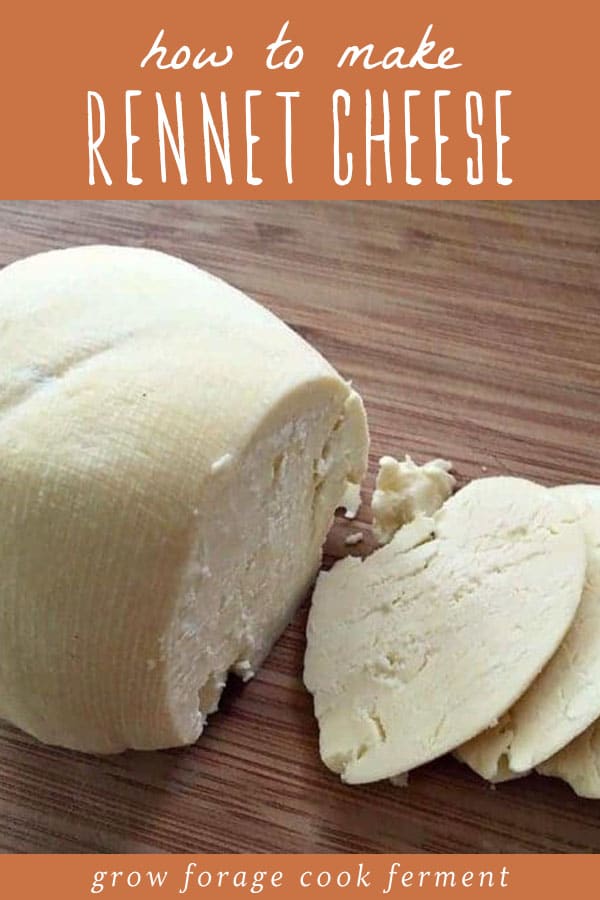
Want to save this post for later?
Making Homemade Cheese
Well, I’ve finally done what I used to think was impossible. I made homemade cheese!
I’ve been making milk kefir cheese for a while now, and I think it’s great, but I’ve always wanted to make a harder, more slice-able cheese.
I tried several years ago, but it went all wrong, and I’ve been too scared to try again ever since.
Then I came across this simple rennet cheese recipe in Sandor Katz’s book, Wild Fermentation: The Flavor, Nutrition, and Craft of Live-Culture Foods, and it looked so easy I had to give it a try.
The cool part about this cheese is that it can be cultured with either milk kefir or yogurt, so you still get all of the probiotic benefits that they have.
This cheese is not any specific type of cheese, however, as most varieties require specific cultures to make them what they are (cheddar, gouda, etc.).
It’s not even a farmer’s cheese, as that uses an acid such as vinegar or lemon juice to separate the curds from the whey.
It’s just a basic rennet cheese that is easy for beginners to make!
Rennet Cheese Supplies
This simple rennet cheese recipe uses just rennet, and doesn’t really require any other special tools or ingredients besides cheesecloth.
I really need to warn you: do not use ultra-pasteurized milk for this recipe.
I have accidentally done this before, and it does not work. Regular pasteurized milk works fine, but many organic milks are now ultra-pasteurized, which is unfortunate.
I did find a grass fed whole milk from Organic Valley that wasn’t ultra-pasteurized, but be warned that some of what they carry is, depending on where you live.
Either animal or vegetable rennet will work, so it’s your call on that one.
I used a double strength vegetable rennet from Cultures for Health because that’s what I had on hand. This vegetable rennet would also work.
Rennet Cheese Recipe
The first thing that you want to do is ripen the milk by adding the milk kefir and/or yogurt to it, then let it sit for an hour or two at around 100°F.
I did this in my Excalibur dehydrator (love that thing!), but you could also leave it on super low heat on the stove, taking it off when necessary so that it doesn’t go above 100°F (use a thermometer).
This part of process is optional, but it gives the milk some beneficial cultures so that the cheese will be both tastier and healthier for you.
In the meantime, dilute the rennet in about ¼ cup of water. More rennet will result in a harder cheese, so I used about 5 drops, but you can use less for a softer cheese.
Then, with your milk still at about 100°F, add the rennet mixture slowly while stirring.
As soon as you’ve added it all, stop stirring. It needs to be still while the rennet does its thing. At this point, turn the burner off if it’s still on.
In about 30 minutes, the rennet should have sufficiently coagulated the milk. Turn the heat on low again to gently rewarm the curd, and use a knife to cut it into roughly one inch cubes.
Gently stir the curds, but try not to break them up too much. Keep over low heat, maintaining the 100°F temperature for about 10 minutes for a soft cheese.
For a harder cheese, which is what I was going for, very slowly increase the temperature to no more than 110°F, for 30 minutes to an hour.
Line a colander with cheesecloth, then gently scoop out the curds with a slotted spoon into it.
Layer the salt in between the curds. Salt helps to draw out moisture, and much of it will drain off, so don’t be afraid to be heavy handed with it.
Gather the corners of the cheesecloth together, twist and squeeze the curds into a ball, and force as much of the excess liquid out as you can.
Feel free to save the liquid whey, as it is useful in many ways (16 Uses for Whey from The Prairie Homestead).
Then hang the cheese ball so that it can drip excess whey for about 24 hours. I do this with a wooden spoon over a large pot.
You can by all means eat this cheese right away, but I like to age it for a few more days. It will even start to develop a natural rind.
To do this, re-wrap the cheese daily in a fresh, dry piece of cheesecloth and keep at room temperature, away from flies. The cheesecloth will help to wick any excess moisture away.
Then, once the cheesecloth is totally dry, you could wax the cheese for longer storage, or just refrigerate it immediately and eat! This took about 5 days for me. I couldn’t wait to try my cheese!
I was nervous that it would be weird or off tasting, but it was absolutely creamy and delicious!
It sliced pretty well and was only the slightest bit crumbly, but it didn’t really matter. I was able to melt it on a slice of bread with some corned beef, that’s what really matters!
Now that I’ve gotten my feet wet with cheese making, I’m definitely going to play around with this recipe a bit. It’s so easy, yet there are many different variables that can change the final outcome of the cheese.
I may make a double batch next time and wax some of it for longer storage to see how that affects it.
All in all, though, I’m just so excited that I made my own cheese!
Have you ever made your own cheese? How did it turn out? Tell me about it!
Simple Rennet Cheese Recipe
Equipment
- Long Bladed Knife
Ingredients
- 1/2 gallon whole milk, preferably organic NOT ultra-pasturized
- 1/2 cup milk kefir or yogurt
- 2-5 drops liquid rennet
- 1 1/2 Tbsp kosher, pickling, or sea salt
Instructions
- Combine the milk and kefir or yogurt in medium sauce pot. Place the pot into a dehydrator and let it sit for 1-2 hours at 100°F. Alternatively, place it under a very low flame on the stove, taking it off the flame as necessary, to maintain the correct temperature; be sure to use a thermometer.
- Dilute the rennet in ¼ cup warm water.
- Remove the pot from the dehydrator if using. Add the rennet mixture slowly while stirring continuously. Stop stirring once you've added all of the rennet. At this point, turn the burner off if it's still on. Let the mixture sit for 30 minutes, until the rennet has sufficiently coagulated the milk.
- Place the pot back onto the burner and heat on low to gently rewarm the curd. Then use a knife to slice the curd into roughly 1" cubes. Gently stir the curds without breaking them up too much. Continue heating on low with a heat of 100°F for 10 minutes for a soft cheese. For a harder cheese, slowly increase the temperature to 110°F and warm for 30-60 minutes.
- Line a colander with cheesecloth. Gently scoop out the curds with a slotted spoon and place into the cheesecloth, layering with salt as you go.
- Gather the corners of the cheesecloth, twist together, and squeeze out the liquid to form a ball. Force out as much excess liquid as possible. Hang the cheeseball above an empty pot (to catch residual whey) for 24 hours.
- After 24 hours, the cheese can be enjoyed immediately, or further aged for several more days. To continue aging, re-wrap the cheese daily in a fresh, dry piece of cheesecloth and store at room temperature. Once the cheesecloth is completely dry, wax the cheese for longer storage or refrigerate immediately and enjoy.
Notes
- Rennet tablets are weaker than liquid rennet and do not work well in many homemade cheese recipes.


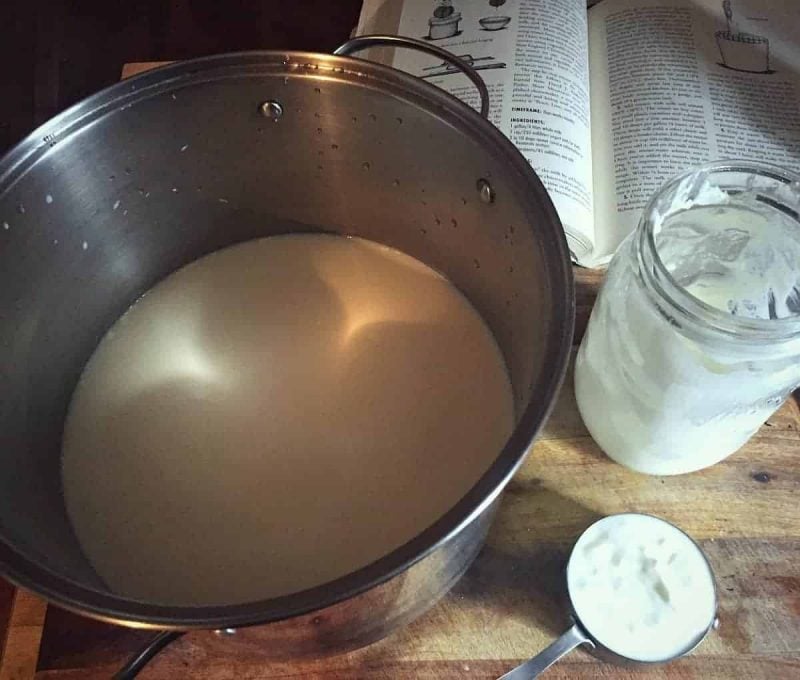
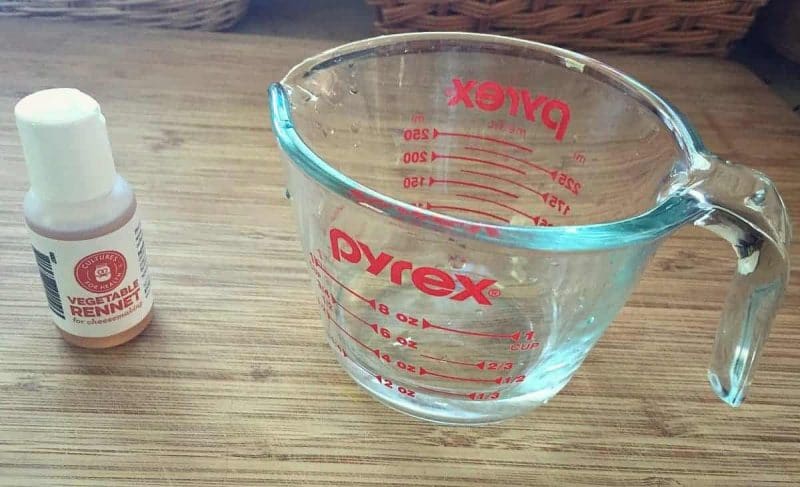
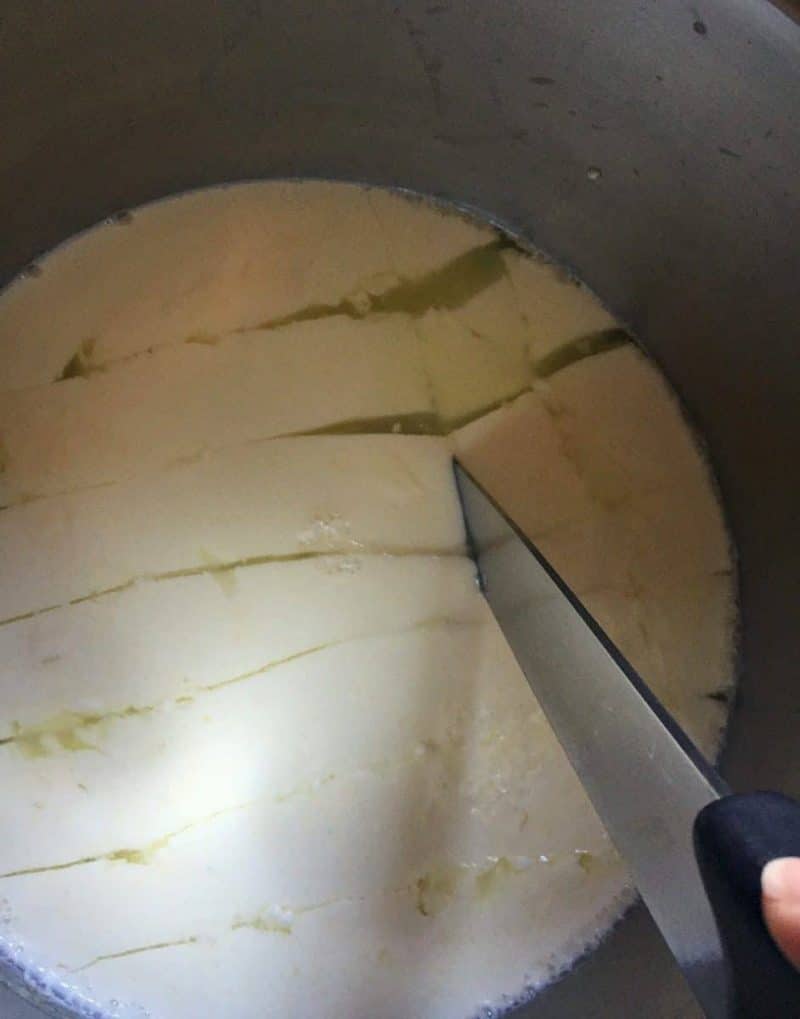
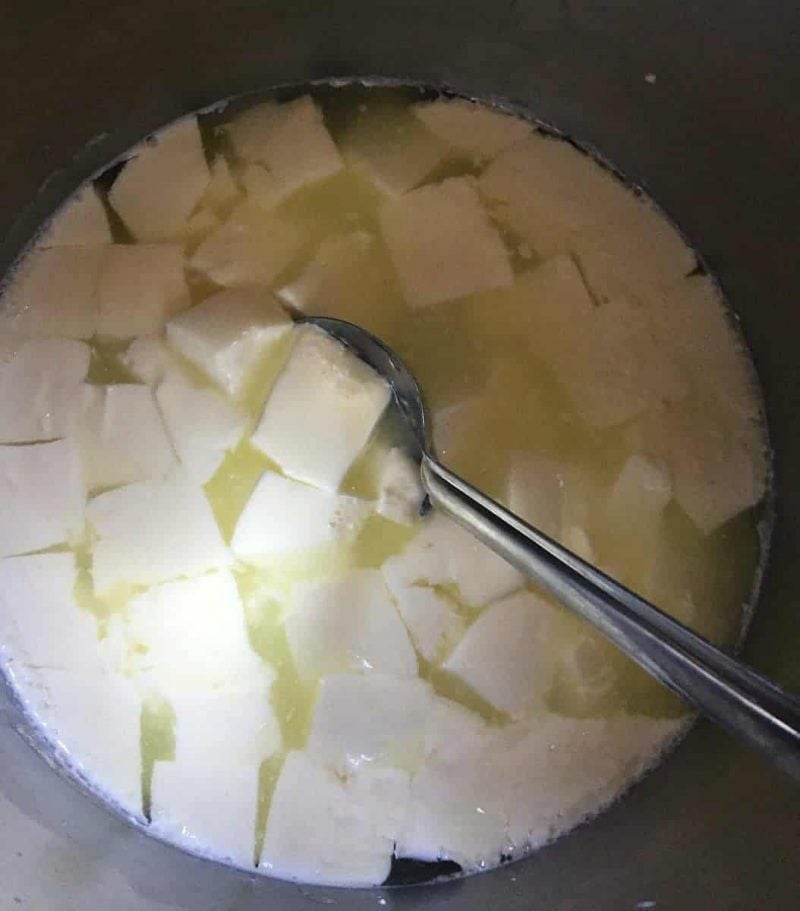
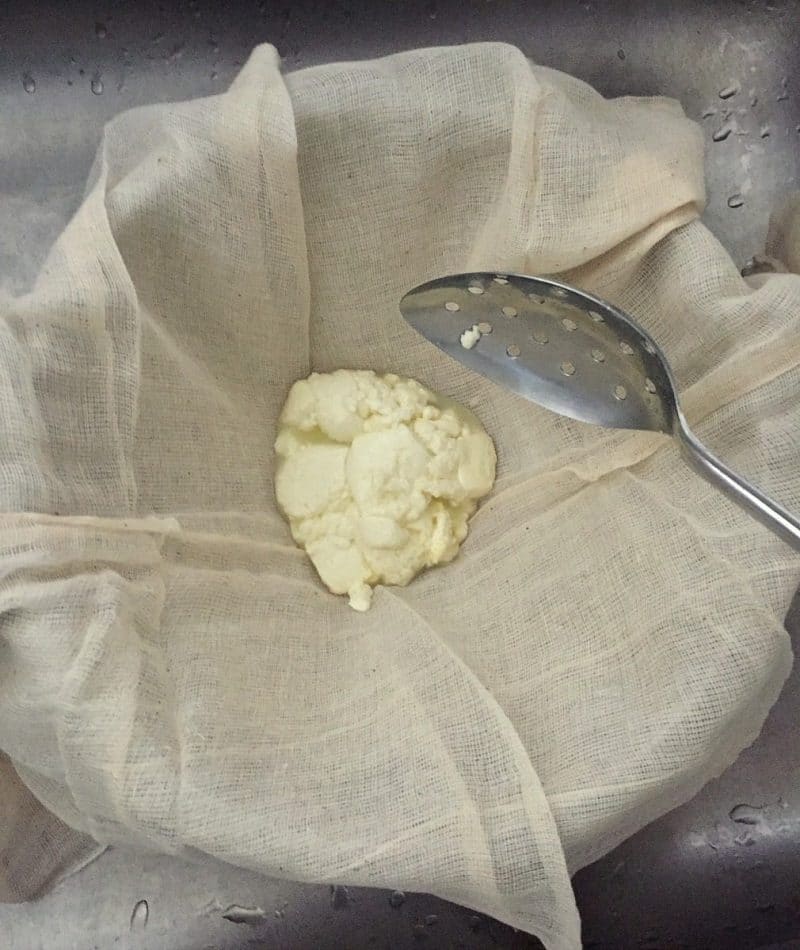
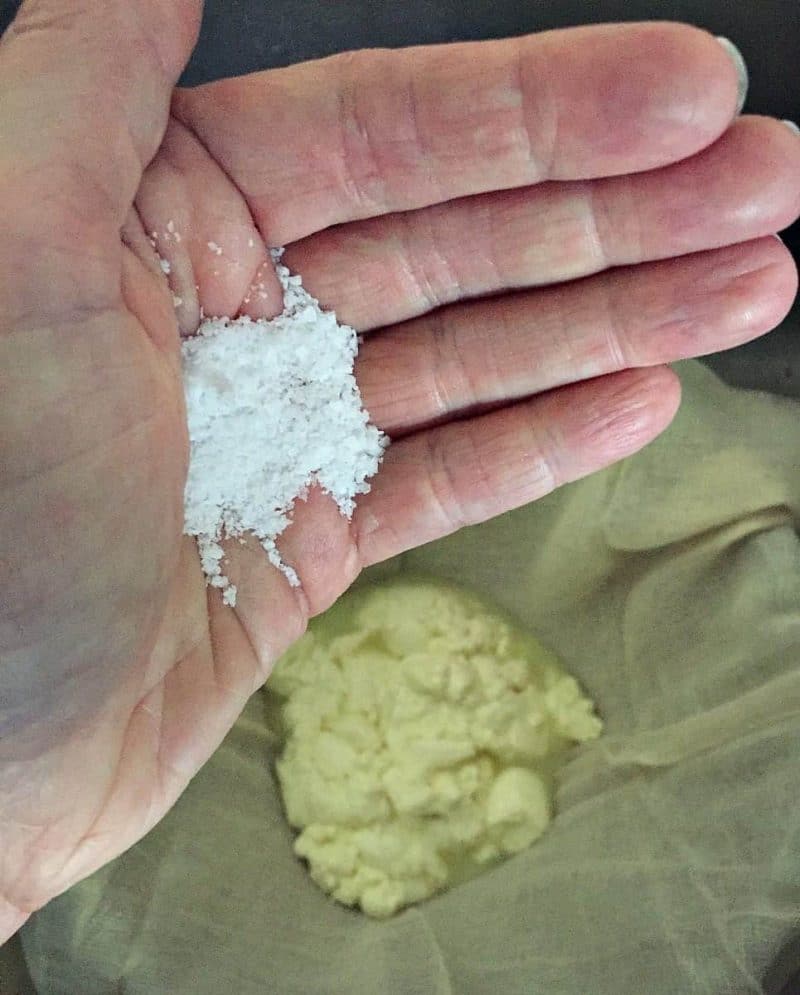
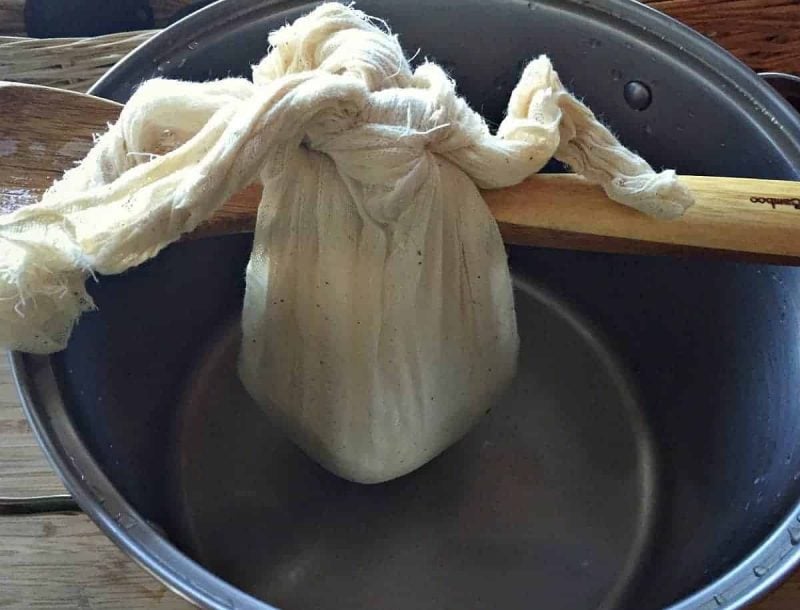
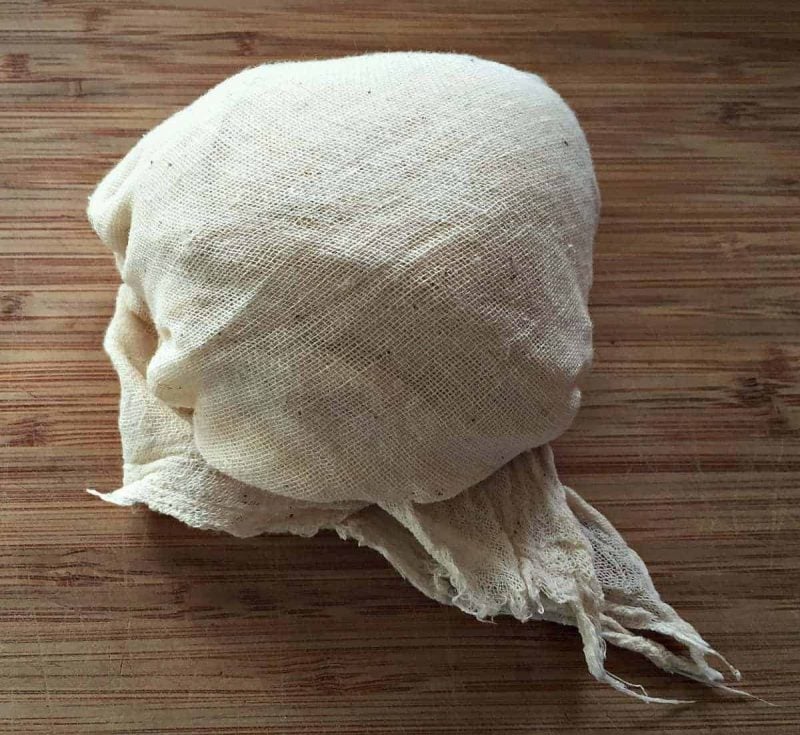
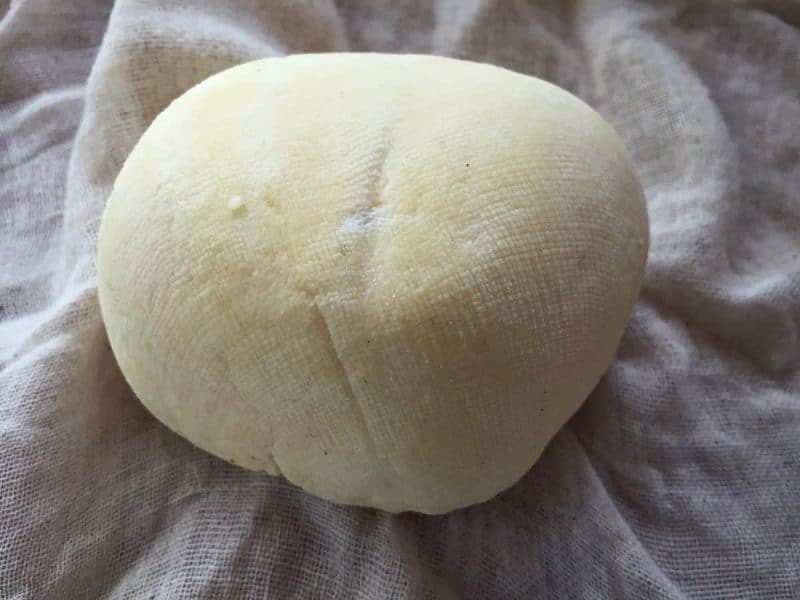
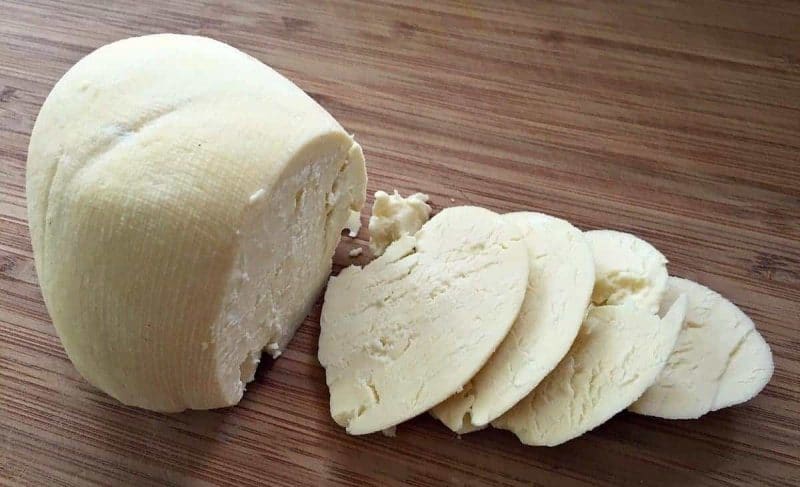
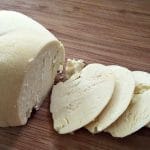

I must be a duffer as mine had no flavor and was very crumbly………..
I will try again and see how I go
Michelle
Hi Colleen,
I want to thank you so very much for this incredible recipe!!!!
I’ve made soft cheeses in the past with vinegar and this was my first venture with a harder cheese using rennet.
I used vegetable rennet and the cheese turned out beautiful.
We enjoyed it with sourdough crackers and an olive tapenade, and the remaining cheese went on a sweet potato and swiss chard crustade, and the cheese crumbled like feta cheese…DEEELISH!!!!
My next batch of cheese, I think I will try to brine it after a few days of aging on my kitchen counter and with fingers crossed, it will be very similar to feta cheese.
I also want to thank you for all the amazing foraging information I get from your daily emails!!!
You certainly have inspired me!!!!
Kind regards,
Leona
I’m so glad you liked this cheese, Leona!!! Enjoy!
I have seen recipes for farmer’s cheese made by adding vinegar to the milk. In these recipes, the milk is only heated once, curds are removed and pressed. In this recipe, the milk is heated, rennet added, then curds reheated. Why does the curd need to be heated back up a second time when using rennet?
It’s a different process. Rennet is used in making cheese which will be aged, sometimes for months or even years. The cheese made by bringing milk close to boiling and then adding an acid yields a cheese which is consumed within a short time. You can strain and salt it, but it won’t last as long as, say, cheddar or Parmesan.
Can this cheese be frozen?
I haven’t tried, but I imagine it would be fine.
This is great! I used a tablet that could do 50 liters of milk per tablet. It measures out to be just about .12grams of the .55 gram tablet for 4gallons of milk. The curds set up a bit loose even after an hour of sitting but the whey is that perfect light yellow to clear color! This was way easier IMO than using vinegar and lemon.
So glad you liked it, Chris!
I followed this recipe to make my first ever cheese and it worked a treat! I pressed it for 24 hours and it has come out like Lancashire cheese, creamy, tangy and salty. We’re just about to feast on it with some home-made sourdough rye crackers.
FYI I used 0.2g of powdered rennet and we did the kefir incubation stage (the milk had started to smell tangy and went thicker by the time the two hours were up).
Oh then we also made traditional whey ricotta with the whey (straight into a spinach and ricotta lasagne) and then also added whey to two sourdough loaves in place of water (one wholemeal and one white), 24 blueberry muffins and french toast for brunch and still have lots to freeze!
Thanks for sharing!
Awesome! I’m so glad your rennet cheese came out great!
Hi,
I follow the recipe exactly then drain over a colander lined with cheese cloth. Flip it every 6 or 8 hours for 1 1/2 days. Then cube and stretch in 195F salted water. Beautiful mozzarella or age for two weeks. You have scamozza cheese like an expert.
Simple recipe.
That sounds wonderful, Kim! Yum!
I make a cheese that is very similar to this. It is very simple to make, and I gathered that you might like a softer cheese, so here is what I do. One and a half gallons of raw milk, heated to very warm but not hot. Remove from heat. Dissolve two or two 1/2 Junket Rennet tablets in a spoonful or two of the warm milk, then gently stir into the large pot of milk. Let stand for about 1 and 1/2 hours w/o stirring or disturbing. After the rest, stir to break up into curds, then let stand for another hour at room temperature. Drain into cheesecloth until most of moisture is drained, then gather the ends of the cheesecloth and tie around a rolling pin and suspend to allow the remaining liquid to drain. This can be done at room temp for a couple of hours. Wrap the now firmer ball of cheese in fresh cheesecloth and refrigerate. You can now slice and salt to eat, but it is best if thoroughly chilled. It will keep unsalted in fridge for about 4 days. My mother and grandmother always made this in the spring when the milk cow came fresh. I do the same and my family and most of my friends that have tried it love it! (You can experiment with storage methods, as it can be kept w/o the cheesecloth in a covered container but will continue to weep some liquid. I like it wrapped in cheesecloth in an open container, but if you still have some left after three days it will become much drier in consistency.)
Can this cheese be melted?
Yes, it’ll melt.
How long can the cheese be stored? Fresh cheese is only 3 days. Can this rennet cheese last longer?
I use one tablet of rennet the milk for one gallon of milk didn’t cougulete much my question what can I do to fix the problem I use hold organic milk thank you
Was your milk ultra-pasteurized? A lot of whole organic milk is and it will not work, unfortunately.
Wonderful!
My question is: I have a kefir cheese recipe that requires nutritional yeast flakes. What’s your opinion???
Nutritional yeast has a flavor similar to cheese, so I’m guessing that’s why it’s called for in that recipe. I think it would be fine either way!
I have some rennet tablets. How many goes into the 1/4 cup water.? After that I only use 5tbsp?
I don’t have any experience using rennet tablets, so I can’t really tell you how much to use. Sorry!
can i use commercial yogurt in making this?
LOVE THIS!!
Yay :)